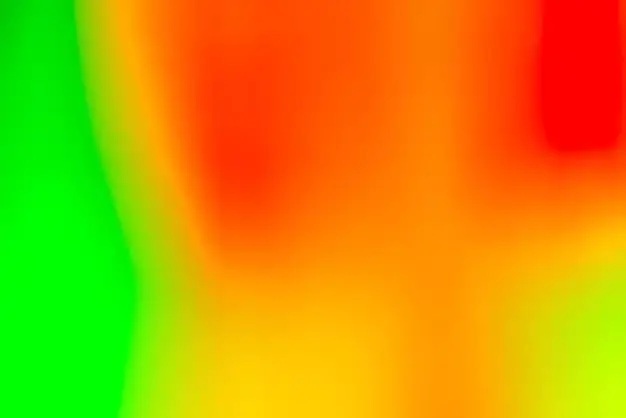The colors red, yellow, and green each have symbolic meanings and associations in various cultures around the world. Understanding what these colors represent can provide insight into beliefs, customs, art, psychology, and more.
Red
Red is a bold, attention-grabbing color that represents several ideas across cultures:
- Love and passion – Red is associated with the heart and emotions. It’s considered the color of love, passion, and desire.
- Danger and caution – Red can signal danger, caution, or warning. Stop signs, fire trucks, and hazardous materials are often marked with red.
- Strength and power – The color red is linked to strength, power, determination, and courage.
- Energy and excitement – Red has an energizing and stimulating effect. It’s used in branding to evoke feelings of excitement and thrill.
- Anger and aggression – Culturally, red can represent anger, rage, or violence due to its relation to blood and war.
Yellow
Yellow has both positive and negative associations:
- Happiness and optimism – Yellow represents joy, happiness, optimism, and imagination. It’s considered a cheerful, uplifting color.
- Intellect and energy – In some cultures, yellow is associated with the intellect. It’s also linked to new ideas and energy.
- Cowardice and deceit – At times, yellow has a negative connotation related to cowardice, deceit, and betrayal.
- Caution and warning – As a bright, eye-catching color, yellow grabs attention. It’s used for caution signs and hazard symbols.
Green
Green has symbolic ties to nature, renewal, wealth, and more:
- Nature and growth – Green represents the natural world, trees, grass, plants and environmentalism. It’s associated with renewal and growth.
- Healing and harmony – In many cultures, green is seen as a restful, peaceful color that promotes balance and healing.
- Money and wealth – Green has connections to prosperity and abundance, from cash to four-leaf clovers.
- Safety and permission – Green can signify that something is safe, stable, or approved of. Traffic lights and safety signs are green.
- Inexperience and envy – Being “green” can mean new, fresh, or inexperienced. The color is also tied to jealousy and envy.
Symbolic Meanings in Culture
Here are some of the specific symbolic meanings associated with red, yellow, and green in different cultures:
| Culture | Red | Yellow | Green |
|---|---|---|---|
| China | Happiness, good fortune, celebration | Royalty | Green hats symbolize infidelity |
| Egypt | Evil, danger | Mourning | Symbol of resurrection and new life |
| India | Purity, fertility, love, beauty | Merchants, traders | Fertility, prosperity |
| Western Culture | Danger, caution, stop | Sunlight, cowardice | Nature, environment, permission |
As shown, colors take on different symbolic meanings based on the specific culture and context. Red, yellow, and green can represent ideas as broad as love, caution, nature, or money depending on the cultural lens.
Use of Red, Yellow, and Green in Design
The symbolic meanings of red, yellow, and green influence how they are used in design and marketing:
- Red is used to grab attention, convey urgency, or communicate passion and excitement. It’s commonly seen in warning signs, food marketing, adventure brands, and romantic or valentine designs.
- Yellow attracts cheerful, optimistic associations when used in design. Brands use it to stand out, incite curiosity, and energize. However, yellow can backfire if perceived as cowardly or deceitful.
- Green relays a sense of health, tranquility, and environmentalism. It’s popular in nature, gardening, healthcare, and financial brands. Dark green can represent prestige and wealth.
When designing logos, websites, advertisements, or products, color choices send an implicit message. Brands consider symbolic color meanings carefully when positioning their visual identities.
Associations with Traffic Lights
One of the most universally recognized color associations is that of traffic lights:
- Red means stop – Red communicates danger, caution, and the need to stop immediately.
- Yellow means slow down and proceed with caution – Yellow signifies that caution should be taken when proceeding.
- Green means go – Green signals safety and gives permission to proceed.
Traffic light colors are consistent across cultures and geographies. People learn the red-yellow-green symbolic meanings from a young age when crossing the street. This makes traffic light colors a widespread, understood non-verbal signaling system.
Use in Idioms and Expressions
Colors appear in many idioms and expressions:
- “Seeing red” – To be angry.
- “Green with envy” – To be jealous.
- “Yellow-bellied” – To be cowardly.
- “Green thumb” – To have a talent for gardening.
- “Red flag” – A warning sign or indicator of a problem.
- “Roll out the red carpet” – Give a grand, fancy welcome.
- “Green light” – Permission or approval to proceed.
When used in everyday language, red, yellow, and green take on symbolic meanings tied to emotion, nature, caution, and behavior. Idioms rely on broadly understood cultural color associations.
Psychology of Color
Research shows that color perception can impact human psychology and behavior:
- Red increases blood pressure, pulse, and respiration rate. It draws attention and can express excitement or danger.
- Yellow activates memory. It can boost focus but may cause fatigue if overused.
- Green is calming and reduces anxiety. It improves efficiency and heightens creativity.
Color psychology examines biological and emotional reactions to hue, shade, and tone. Red, yellow, and green can provoke physical and psychological effects when viewed.
Conclusion
Red, yellow, and green hold symbolic significance across cultures. While meanings vary, they often relate to concepts like love, caution, nature, and wealth. Traffic lights, idioms, design principles, and color psychology all build on broad symbolic associations people ascribe to red, yellow, and green.

